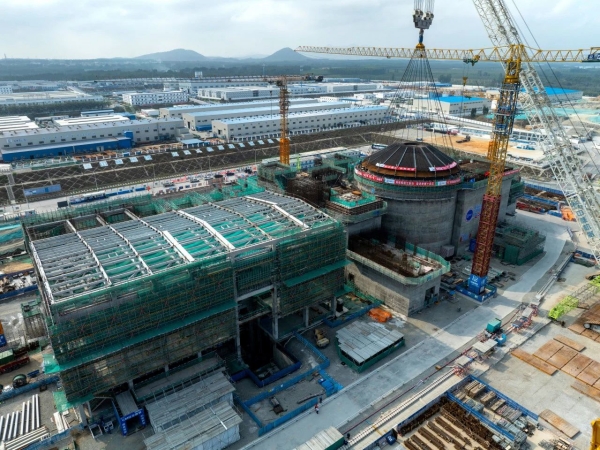Installation of the digital control system (DCS) of the Linglong One, a multi-purpose, small modular pressurized water reactor self-developed by the China National Nuclear Power Corporation, started in Changjiang, in China's southernmost island province of Hainan, on April 10, laying the foundation for the subsequent availability of the main control room.
The DCS is hailed as the "central nervous system" of a nuclear power plant. The DCS of the Linglong One adopts the domestically developed Longlin platform (safety-grade) and Longqi platform (non-safety-grade) with independent intellectual property rights.

Installation of the digital control system (DCS) of the Linglong One started in Changjiang, in China's southernmost island province of Hainan, on April 10. [Photo/sasac.gov.cn]
The Longlin platform can achieve safe control of the reactor under various operating conditions, ensuring the safe operation of the nuclear power plant. The Longqi platform is responsible for operation and management, serving as an important guarantee for efficient and economical operation. Together, these two platforms control the operation of hundreds of systems, tens of thousands of devices, and various operating conditions within the nuclear power plant.
Linglong One, the world's first land-based commercial small modular reactor, started construction in Hainan on July 13, 2021. Once operational, it is expected to generate an annual electricity output of 1 billion kilowatt-hours, meeting the electricity needs of 526,000 households in Hainan.
Additionally, the project is expected to reduce carbon dioxide emissions by approximately 880,000 tons annually, equivalent to planting 7.5 million trees in a year. This project will help achieve the national "dual-carbon" goals and contribute to the construction of Hainan as a "clean energy island", providing stable and reliable clean energy and promoting nuclear energy development through the demonstration effect of advanced reactor technology.
(Executive editor: Zhu Zeya)